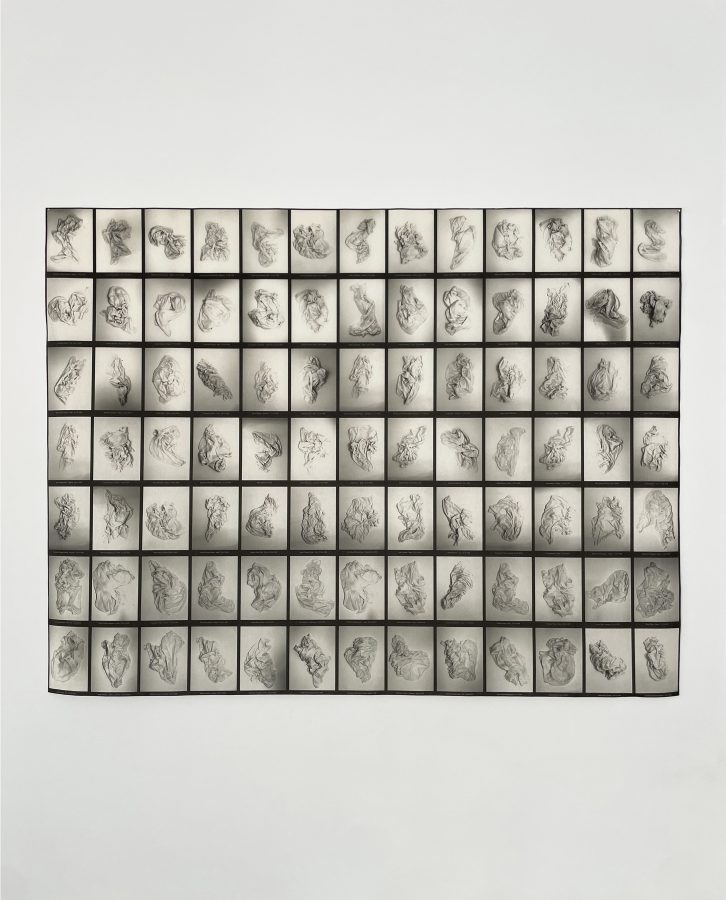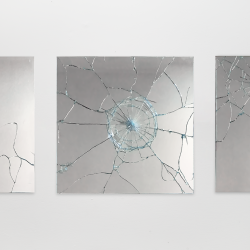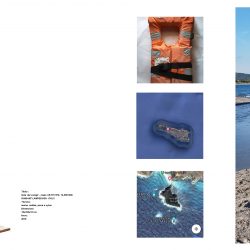work
Garage Olimpo
| category | Other |
| subject | Political / Social |
| tags | fotografia#carta giapponese#libro d'artista# |
| base | 63 cm |
| height | 91 cm |
| depth | 0 cm |
| year | 2016 |
Book, Japanese (Kawasaka) paper, Ink Jet Canon Pixma printer, 29,7x21x1 cm
Japanese (Kawasaka) paper inserts 91x63 cm
Between the 1970s and the1980s, during Videla military regime, a lot of young people disappeared in Argentina Ios desaparecidos- kidnapped and then killed during the so-cal led death flights. Typically, they were drugged into a stupor, loaded into aircraft, stripped, and dropped into the Atlantic Ocean where their identities were deleted. The work is about the disappearance of ni nety you ng people and their imprisonment in a tortu re center cal led Garage Olimpo. Their story being narrated in the movie of the same name by Marco Bechis in 1999.
A book col lects ninety pictures of the same amount of wet clot-is, each one showing a different drapery and the name and the date of disappearance. Inside the book there is a brochure with the overall view of the images. The cloths - the only trace of the disappeared young people whose remains lie under the ocean - give back their last, dramatic, presence and at the same time they am plify the drama of the cancell ation of their identities.
The absence of a body to be returned to their family.
More clothes would be necessary today for a similar drama, the recent "journeys of hope" that daily cross the Mediterranean Sea which, like a black hole, becomes a place of cancellation, disappearance and annihilation of lives, desires and ill usions.
Japanese (Kawasaka) paper inserts 91x63 cm
Between the 1970s and the1980s, during Videla military regime, a lot of young people disappeared in Argentina Ios desaparecidos- kidnapped and then killed during the so-cal led death flights. Typically, they were drugged into a stupor, loaded into aircraft, stripped, and dropped into the Atlantic Ocean where their identities were deleted. The work is about the disappearance of ni nety you ng people and their imprisonment in a tortu re center cal led Garage Olimpo. Their story being narrated in the movie of the same name by Marco Bechis in 1999.
A book col lects ninety pictures of the same amount of wet clot-is, each one showing a different drapery and the name and the date of disappearance. Inside the book there is a brochure with the overall view of the images. The cloths - the only trace of the disappeared young people whose remains lie under the ocean - give back their last, dramatic, presence and at the same time they am plify the drama of the cancell ation of their identities.
The absence of a body to be returned to their family.
More clothes would be necessary today for a similar drama, the recent "journeys of hope" that daily cross the Mediterranean Sea which, like a black hole, becomes a place of cancellation, disappearance and annihilation of lives, desires and ill usions.



















